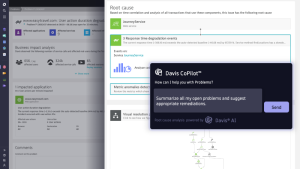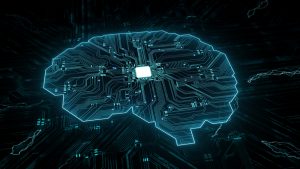Artificial intelligence adoption is on the rise everywhere—throughout industries and in businesses of all sizes. And while generative AI was much hyped in 2023, the deterministic nature of causal AI—which determines the precise root cause of an issue—is a key foundational requirement to get reliable decisions and recommendations from generative AI technologies.
Further, not every business uses AI in the same way or for the same reasons. So, it’s important for organizations to choose the AI type that best meets their needs. While predictive AI relies on machine learning algorithms that find correlations in data, causal AI aims to determine the precise underlying mechanisms that drive events and outcomes. As a result, causal AI use cases are key to enabling organizations to identify the root cause of problems and determine remediation.
Deriving cause-and-effect relationships is a key way for causal AI to reason, explain itself, and make reliable predictions. That’s why causal AI use cases abound for organizations looking to build more reliable and transparent AI systems.
Making the case for causal AI
Most AI today uses machine learning models like neural networks that find correlations and make predictions based on them. However, correlation does not imply causation. So, these models are limited in their ability to explain why outputs occurred or to make reliable decisions in new situations. They’re essentially informed guesses or likelihoods of outcomes. The growing recognition of these limitations is driving increased interest and research into causal AI use cases.
Causal AI use cases for modern observability
Integrating causal AI into observability systems can significantly advance organizations’ understanding of their environments. Traditional monitoring tools can alert organizations to issues, but causal AI can precisely identify the root cause of operational and quality issues. This facilitates quicker and more effective problem solving, reducing downtime and improving reliability through intelligent automation.
More generally, causal AI can contribute to explainable and fair AI systems. That’s important as regulatory scrutiny and demands for responsible AI are growing. According to a recent Dynatrace survey of 1,300 CIOs, CTOs, and other senior technology leaders, 98% of technology leaders are concerned that generative AI could be susceptible to unintentional bias, error, and misinformation. AI systems’ ability to explain the reasons for their recommendations grounded in causal AI could go a long way in resolving these trust issues.
Take causal AI to the next level with a composite approach
The benefits of causal AI are obvious, as it determines the exact underlying causes and effects of a digital system’s events or behaviors based on the system’s topology. The same can be said for predictive AI, which makes predictions about future events based on data patterns, and generative AI, which uses training data to create content that reflects its users’ natural language queries. But nothing is perfect, and each AI type has drawbacks.
That’s where Dynatrace can help. Dynatrace takes a composite approach, called hypermodal AI, which combines causal, predictive, and generative AI to drive fast, precise, and trustworthy answers and automation.
This hypermodal approach features the following:
Automated root-cause analysis. Dynatrace automated root-cause analysis uses causal AI to rapidly pinpoint the source issues behind user experience, application, and infrastructure performance problems before they result in outages. Through dependency mapping, Dynatrace causal AI can contextualize and explain incident alerts, saving teams substantial time compared with manual troubleshooting across complex, modern IT environments.

Intelligent alert prioritization. By determining the likely business effects of service issues using causal AI, Dynatrace automatically prioritizes issues and alerts the relevant teams while allowing auto-remediation on routine alerts. This reduces alert fatigue and speeds up the restoration of critical systems through auto-remediation.
Failure prediction. Dynatrace uses causality graphs and analysis of the sequence of events to determine how chains of dependent application or infrastructure events will potentially lead to slowdowns, failures, and outages. By predicting failure risk, Dynatrace enables pre-emptive changes such as resource autoscaling, traffic shifting, or preventative rollbacks of bad code deployment ahead of time.

Resource optimization. Dynatrace uses the causal relationships between events across user experience, application, and infrastructure layers and ties them to business KPIs to optimize dynamic policy decisions for cloud resource or container scaling and cloud cost optimization to meet performance and efficiency goals even in highly dynamic and complex environments.
Automated remediation. For well-defined remediation processes, teams can automate remediation tasks, such as server restarts, spinning up new nodes, code rollbacks, and configuration changes based on the determination of causal AI—all without manual intervention in many cases.





Looking for answers?
Start a new discussion or ask for help in our Q&A forum.
Go to forum